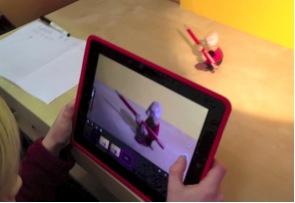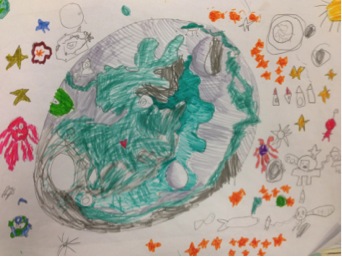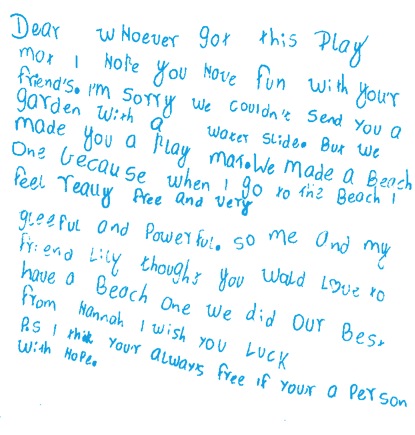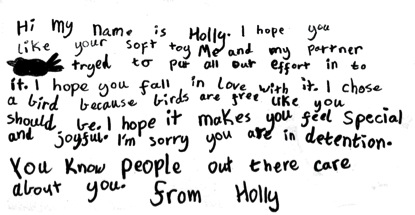Late last year, I was fortunate to spend some time with Hilary Green - then a graduate teacher in a local school here in inner Melbourne. Hilary described in enthusiastic detail, an inquiry she and her team had facilitated with their 6 &7 year old students. The inquiry started out as an investigation into the culture of play but culminated in the students experiencing the power of giving to make a difference to the lives of others. Along the way they built skills as researchers, designers, film makers, collaborators, communicators and activists! I asked Hilary to write about this experience as a guest on my blog – here is a great example of a rigorous yet emergent approach to inquiry – and real action as a result! I am sure you will enjoy reading her reflection.
About the inquiry.
" Our inquiry was initially into ‘The Culture of Play’ (part of a whole school project into culture). The Year 1 teaching team thought that by exploring play, a subject the children in which the children were experts, we would be able to uncover the complexities of culture. The first semester saw us explore many questions we had about play. What do we play? Where do we play? How do we play and even why do we play? From there, the children narrowed down their ideas to categories their ideas into three things that affect play that they want to explore. At the end of term we presented our research in the form of a film festival, a nighttime celebration involving all children and parents where the children presented short films they had made.
The film night was made up of 3 short films, each using a different “language” of expression. This included animation, silhouette mime and a puppet theatre. Each of the films was based on an experience we had exposed the children to which included visits to retirement villages another school and the Melbourne Museum.
The seeds of action...Prior to the film festival, one of the children suggested that we raise money from the night and make toys for asylum seeker children in detention because they didn’t have toys. After some discussion, the group agreed and a new branch of the inquiry grew. Like real designers, the children began by making some prototyopes and co constructed some success criteria - they wanted the toys to be:
- Safe
- Able to be shared with friends
- Long lasting
- Comforting
- Imaginative
- Used in many different ways
- Made with strong materials
- Age appropriate
Children were so excited about this action they naturally involved their families after hours:
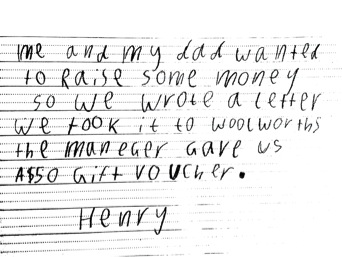 Some parents shared their knowledge of the design process and another whose work involved defending the legal rights of refugees, was able to answer the children’s increasing questions:
Some parents shared their knowledge of the design process and another whose work involved defending the legal rights of refugees, was able to answer the children’s increasing questions:
- My dad goes to court and argues about refugees coming to Australia. He argues with the government to make sure that refugees are safe. He came to talk to us about refugees. Hannah
- David showed us on a world map where refugees are coming from. Alima
- Refugees are people who are forced to leave their home because it is too dangerous. Holly
- Detention centres are places where people cannot come and go as they like. Vittoria
The children worked in small groups to develop initial designs and prototypes of toys for the children in detention centres. They then reviewed each others’ designs each other feedback.
Another father, who designs soft toys came in to share the toys he designs and makes. The children thought of the questions to ask him:
- How do you put the stuffing in?
- How do I create the different colours on my material?
- How do you know what materials to use?
At all stages of the process, the children were inquirers – whether they were investigating how to create their own film, asking experts questions, testing out designs, learning how to physically construct aspects of their toy/game – they had to question, investigate and meaning make in authentic ways. By the end of the inquiry, the children had collaborated to produce some beautiful toys and games to give to the children being housed in detention centres in Melbourne. They decided to write letters to accompany their gifts – the letters show how emotionally invested the children became in this project:
Some reflections
As a first year teacher, this experience has taught me a great deal about teaching and learning through inquiry. What made it so fulfilling? I think the following elements played a crucial role:
Expectation – believing that children can achieve more than you think. As a new teacher, I find that coming fresh into teaching often brings about moments where I think… will this be too hard for them…I’ll just see how it goes and they always surprise me. Some children become experts and then they teach others. I was amazed at what they could do –as film makers, toy makers and activists!
Listening – letting the students have a voice/ drive the project at critical turning points. Often it was just a brief whole class discussion at the end of the day but the students always had questions and we responded to their questions – letting them guide the next stage of the inquiry.
Documentation We regularly displayed questions and student work so that students (and parents) could see the way the project was building over time and the children could see what their peers were thinking. Regular documentation helped us track and reflect on the inquiry.
Parent Involvement Our cohort was blessed with parents who had expertise in the areas we needed. But others were similarly keen to help. When things were overloaded, I organized a “Stitch and Socialise” night were I brought any sewing that the kids would find too tricky and the parents came to learn how to sew or just do their best to finish off the toys.
Teacher and community collaboration The teachers in my team all had different strengths which added to the engagement of the students. We relied heavily on experiences in the community and the emphasis was very much on primary sources. The students themselves – though young – collaborated throughout. Making the animated movies in small groups was the perfect vehicle for true collaboration – they had a shared goal and needed to do lots fo communicating and problem solving to make it happen. The use of ipads for this aspect of the inquiry was fantastic.
Authentic purpose. I have now seen how engaged kids are when they have a real purpose for their inquiry. At different stages in the inquiry…they recorded their invented games to share each other, they made films because they believed what they learned was worth sharing -and they also loved the idea of having a night time film festival where they would be the stars (wouldn’t you?). But perhaps the most powerful purpose was their drive to make a positive difference to the lives of other children. As the letters they wrote to accompany the toys attest – our children showed real empathy and compassion. This is an aspect of the inquiry I want to try to consider throughout my future as a teacher."
Hilary Green, July 2014
I am sure that readers of this blog will agree that this is an example of a rich, authentic inquiry. Let's keep reminding ourselves of the importance of real purposes and action for learning - asking kids "We KNOW this...but what can we DO about it?" - As Hilary's narrative shows, action itself can be the greatest catalyst for inquiry.
How well do your inquiries prompt powerful action?
Just wondering....


